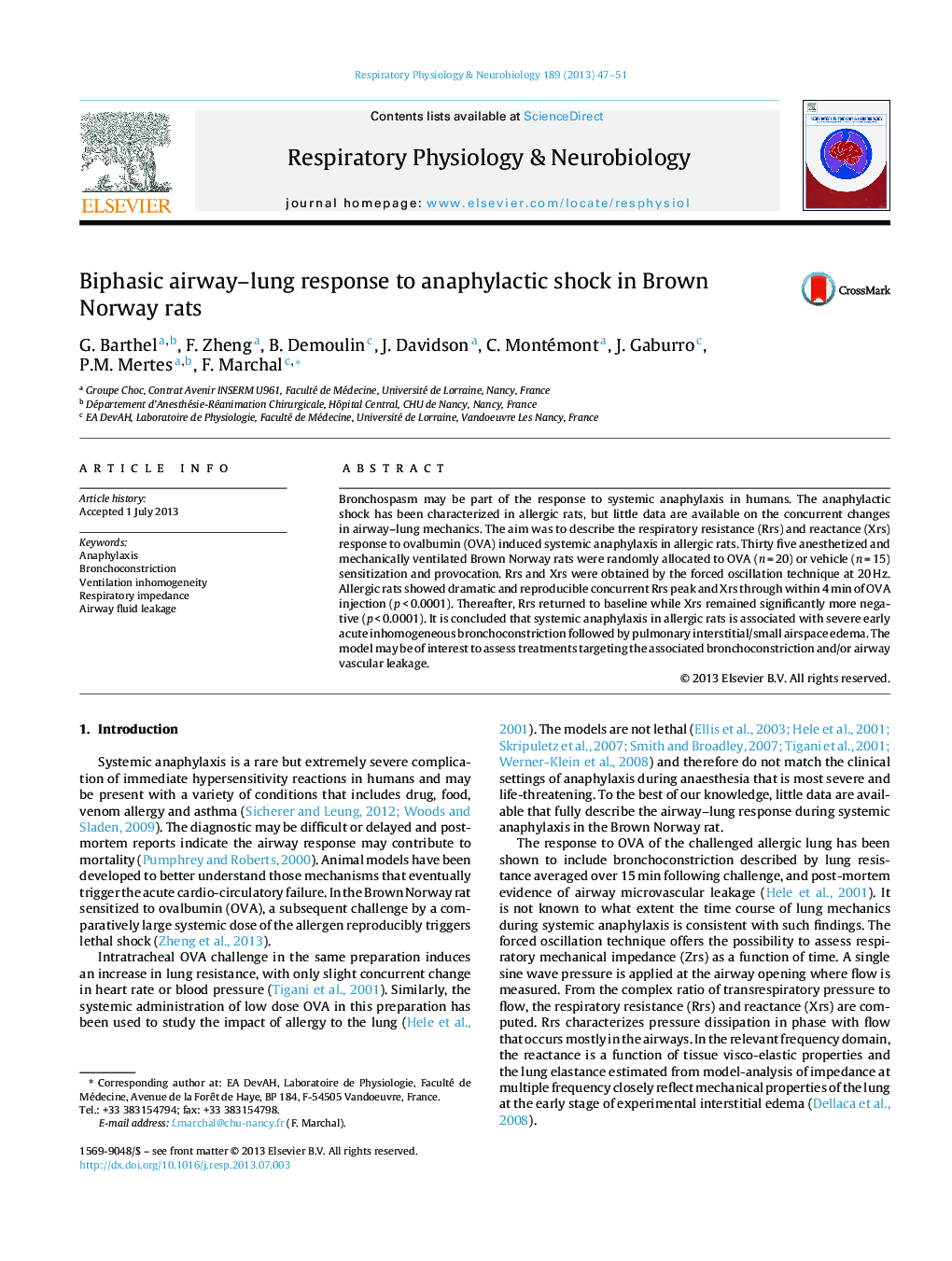| Article ID | Journal | Published Year | Pages | File Type |
|---|---|---|---|---|
| 5926101 | Respiratory Physiology & Neurobiology | 2013 | 5 Pages |
â¢Airway-lung response is monitored throughout ovalbumin induced anaphylactic shock.â¢Peak increases in respiratory resistance and reactance occur early in anaphylaxis.â¢Respiratory resistance returns to baseline while reactance remains elevated.â¢Early bronchoconstriction appears followed by later fluid leak into smaller airways.
Bronchospasm may be part of the response to systemic anaphylaxis in humans. The anaphylactic shock has been characterized in allergic rats, but little data are available on the concurrent changes in airway-lung mechanics. The aim was to describe the respiratory resistance (Rrs) and reactance (Xrs) response to ovalbumin (OVA) induced systemic anaphylaxis in allergic rats. Thirty five anesthetized and mechanically ventilated Brown Norway rats were randomly allocated to OVA (n = 20) or vehicle (n = 15) sensitization and provocation. Rrs and Xrs were obtained by the forced oscillation technique at 20 Hz. Allergic rats showed dramatic and reproducible concurrent Rrs peak and Xrs through within 4 min of OVA injection (p < 0.0001). Thereafter, Rrs returned to baseline while Xrs remained significantly more negative (p < 0.0001). It is concluded that systemic anaphylaxis in allergic rats is associated with severe early acute inhomogeneous bronchoconstriction followed by pulmonary interstitial/small airspace edema. The model may be of interest to assess treatments targeting the associated bronchoconstriction and/or airway vascular leakage.
